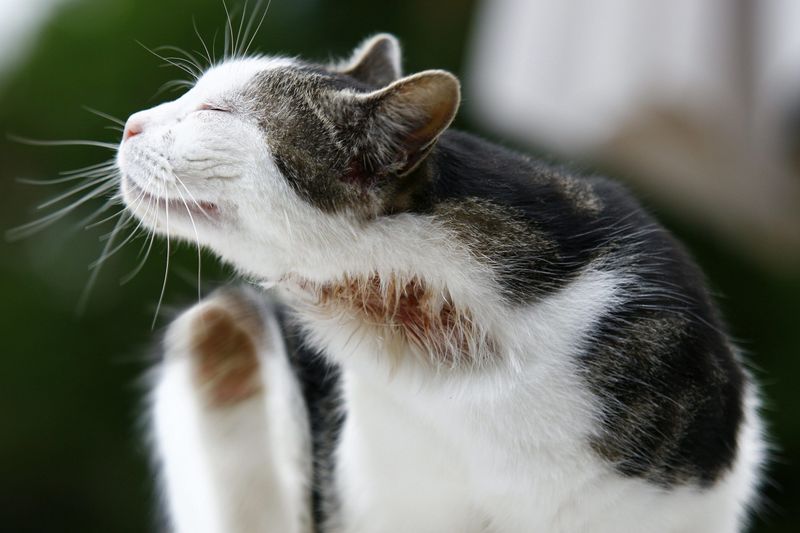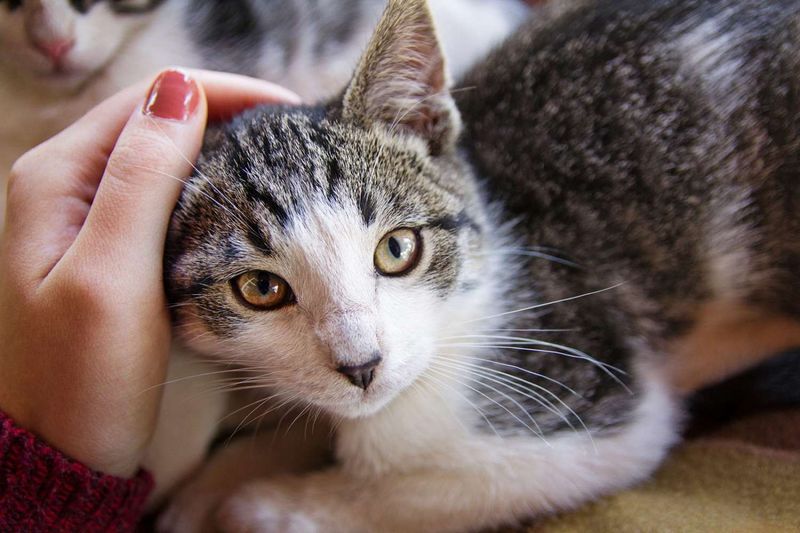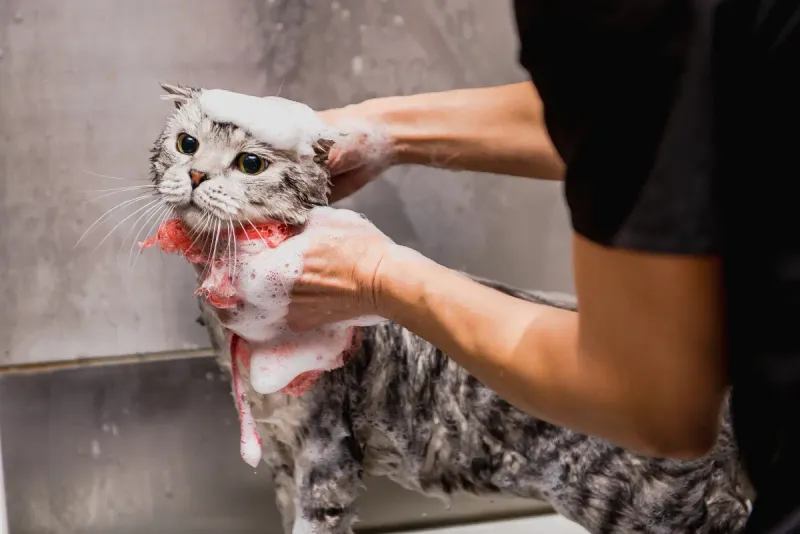📖 Table of Content:
- 1. Health Issues
- 2. Socialization Challenges
- 3. Litter Box Training
- 4. Dietary Adjustments
- 5. Feline Territorial Behavior
- 6. Dealing with Fleas and Ticks
- 7. Trust Building
- 8. Introducing to Other Pets
- 9. Grooming Challenges
- 10. Handling Nighttime Activity
- 11. Dealing with Scratching
- 12. Overcoming Fear of Outdoors
- 13. Handling Vocalization
- 14. Developing Play Behavior
- 15. Addressing Medical Emergencies
- 16. Escape Attempts
- 17. Noise Sensitivity
Adopting a stray cat offers the potential for a deep and rewarding bond, but it also brings challenges that are often overlooked. Many stray cats come with unique histories, health concerns, and behavioral quirks that require extra attention and patience. Understanding these potential obstacles can help smooth the adjustment for both the new pet and the owner.
The process of bringing a stray cat into a home can involve dealing with various issues, from medical problems to unfamiliar behaviors. It’s important to recognize that not all stray cats have the same needs, and each one may require a different approach. Addressing these challenges head-on makes it possible to provide a safe and loving environment for the new feline companion.
Being well-prepared for the difficulties that come with adopting a stray can make a significant difference in the overall experience. Whether it’s managing health concerns, building trust, or correcting undesirable habits, a thoughtful and informed approach will ease the transition. With patience and the right strategies, a stray cat can become a cherished and happy member of the family.
1. Health Issues
When you adopt a stray cat, you might face unexpected health issues. Stray cats often come with parasites or respiratory infections. A veterinary checkup is essential to identify any underlying health problems. Don’t panic. With the right care, many issues are manageable.
Keep a close eye on your cat’s health by observing their behavior and eating habits. Regular vet visits can catch ailments early and prevent them from worsening.
Vaccinations and deworming treatments are crucial to ensure your cat’s long-term health. By staying proactive, you can address these health challenges effectively.
2. Socialization Challenges
Stray cats may not be accustomed to human interaction, making socialization challenging. They might hide or be wary of touch. Patience is key here. Gradually introduce them to your presence by spending time nearby without forcing interaction.
Create a safe environment for the cat to explore at its own pace. Use treats and toys to encourage positive engagement. Over time, your cat may start to trust you and show more affection.
Understanding that each cat socializes at its own pace will help you remain patient and compassionate during the process.
3. Litter Box Training
Teaching a stray cat to use a litter box can be tricky. They may not know what it is for initially. Start by placing the litter box in a quiet, accessible area. Show the cat the litter box and gently place them inside it to familiarize them.
Consistency is crucial. Keep the litter box clean to encourage its use. If accidents happen, don’t scold the cat; instead, redirect them to the litter box.
Positive reinforcement with treats can also aid training. With patience, your stray cat will learn to use the litter box efficiently.
4. Dietary Adjustments
The dietary needs of stray cats can vary, and they may have developed preferences over time. Changing their food should be done gently and gradually. This helps avoid digestive upset and allows them to adapt more easily to their new meals.
Observe your cat’s reactions to different foods to identify what they enjoy. Sometimes, they may need special diets to address health concerns. Consult your vet for guidance on nutritional needs.
Providing a balanced diet supports your cat’s overall health and well-being. Don’t hesitate to experiment with various flavors and textures to find what suits your cat best.
5. Feline Territorial Behavior
Territorial behavior is common in cats that have lived on the streets, often showing up as aggression or territorial marking. It’s instinctual for them to want to defend their new space. Giving them enough room to establish their own territory can help ease this behavior.
Use pheromone sprays or diffusers to create a calming environment. These can help reduce anxiety and territorial disputes.
Avoid confrontations with other pets initially. Gradually introduce them to each other under supervision. With time, your cat may feel more secure and less defensive.
6. Dealing with Fleas and Ticks
Fleas and ticks are common in stray cats. Treating these pests quickly is important for comfort and health. Use flea combs to remove visible parasites, and consult your vet for suitable treatments.
Regular grooming can help detect and manage infestations early. Keep your home clean, vacuuming regularly to prevent re-infestation.
Consider using preventive treatments to keep fleas and ticks at bay long-term. Addressing this issue promptly ensures your cat remains healthy and happy.
7. Trust Building
Earning a stray cat’s trust requires patience and a gentle approach. Past negative encounters with humans may have left them fearful or wary. Move slowly and calmly to avoid startling them and build a sense of security.
Offering treats and speaking softly can help create a bond. Allow the cat to approach you at their own pace, respecting their boundaries.
Celebrate small milestones in trust-building, such as the cat allowing a gentle pet or sitting beside you. With persistent effort, your stray cat will likely become more comfortable around you.
8. Introducing to Other Pets
Integrating a stray cat with existing pets requires careful planning. Start by keeping them separated initially, allowing them to become familiar with each other’s scent.
Use a pet gate for controlled introductions, letting them see and sniff each other without direct contact. Gradually increase interaction time as they become more comfortable.
Supervise interactions closely to prevent conflicts. Reward positive behavior with treats and praise. With patience, your stray cat can become a harmonious member of your pet family.
9. Grooming Challenges
Grooming a stray cat can be challenging, especially if they have long fur or mats. Initially, they might resist grooming activities. Start slowly, using gentle brushes and treats to make the experience positive.
Regular brushing helps prevent matting and reduces shedding. If the cat’s coat is severely matted, professional grooming might be necessary.
Make grooming a routine that your cat looks forward to by associating it with rewards and affection. Over time, grooming will become a more enjoyable activity for both of you.
10. Handling Nighttime Activity
Having adapted to a nocturnal lifestyle, stray cats may become more active at night, potentially disrupting your sleep routine. To combat this, offer plenty of stimulating activities during the day. This can help them burn off energy and adjust to a more appropriate nighttime schedule.
Engage them with playtime to expend energy, and create a cozy sleeping area for nighttime. If they still remain active at night, ensure they have toys to keep them occupied quietly.
Patience and consistency in adjusting their activity levels can lead to a more restful night for everyone.
11. Dealing with Scratching
Scratching is a natural behavior for cats, but stray cats may scratch furniture. Providing scratching posts and deterrents can mitigate damage.
Place scratching posts in areas the cat frequents, encouraging use through catnip or toys. Consistency in redirecting scratching behavior is key.
If furniture scratching persists, protective covers can be an interim solution. Understanding this behavior helps in finding effective solutions.
12. Overcoming Fear of Outdoors
Due to past negative experiences outdoors, stray cats may be reluctant to explore the outside world. Gradual, controlled exposure to the outdoors can help them feel more secure and confident. Taking it slow allows them to adjust at their own pace.
Start with short, supervised visits, ensuring the area is safe. Use treats and toys to make outdoor time enjoyable.
Never force the cat outside; allow them to explore at their own pace. With positive reinforcement, your cat may eventually enjoy outdoor adventures.
13. Handling Vocalization
Stray cats might vocalize more as they adjust to a new environment. Understanding their vocal cues can help. They may meow for attention, food, or due to stress.
Responding to their needs without reinforcing negative behavior is crucial. Establish a routine to address needs preemptively.
If vocalization becomes excessive, consult with a vet or behaviorist for further guidance. Consistent care and attention can reduce unnecessary vocalization.
14. Developing Play Behavior
Helping a stray cat embrace playfulness can be both fun and fulfilling. They may not be accustomed to scheduled playtime. By introducing different toys, you’ll learn which ones capture their attention.
Feather toys, balls, and interactive puzzles can engage their hunting instincts. Playtime also strengthens your bond.
Ensure play sessions are regular and enjoyable. Understanding your cat’s play style helps tailor activities for maximum fun and stimulation.
15. Addressing Medical Emergencies
Health crises can arise suddenly with stray cats. It’s crucial to be prepared in advance. Make sure you have a local vet on hand and know the emergency contact details.
Recognize signs of distress, such as limping, vomiting, or lethargy, and act promptly. When in doubt, seek professional advice.
Preparation and knowledge can make all the difference in an emergency. Keeping a pet first aid kit handy and knowing basic procedures can provide peace of mind.
16. Escape Attempts
Cats are naturally curious creatures, and newly adopted strays often see an open door as an invitation to explore the great unknown. Imagine your feline friend, eyes sparkling with mischief, as they dash past you in a flash. It’s more than just a game; it’s an innate urge to roam.
To manage this, create a welcoming environment indoors with plenty of toys and climbing spaces. Consider installing a screen door or using a pet gate to prevent surprise escapes. Consistent routines and comforting scents can also help reduce their urge to journey outside.
Patience and understanding of your cat’s adventurous spirit will foster trust and security.
17. Noise Sensitivity
Household noises can be overwhelming for a stray cat unaccustomed to the hums and bangs of modern appliances. Picture a tabby, ears twitching at the refrigerator’s buzz, or eyes widening at the washing machine’s spin cycle. These sounds can trigger anxiety or fear.
To ease their transition, introduce noises gradually and provide a safe retreat. Play soothing music to mask harsh sounds and create a calm atmosphere. Reward calm behavior with treats and affection, reinforcing a sense of safety.
With time and gentle acclimatization, your cat will learn to navigate the aural landscape of their new home.

















